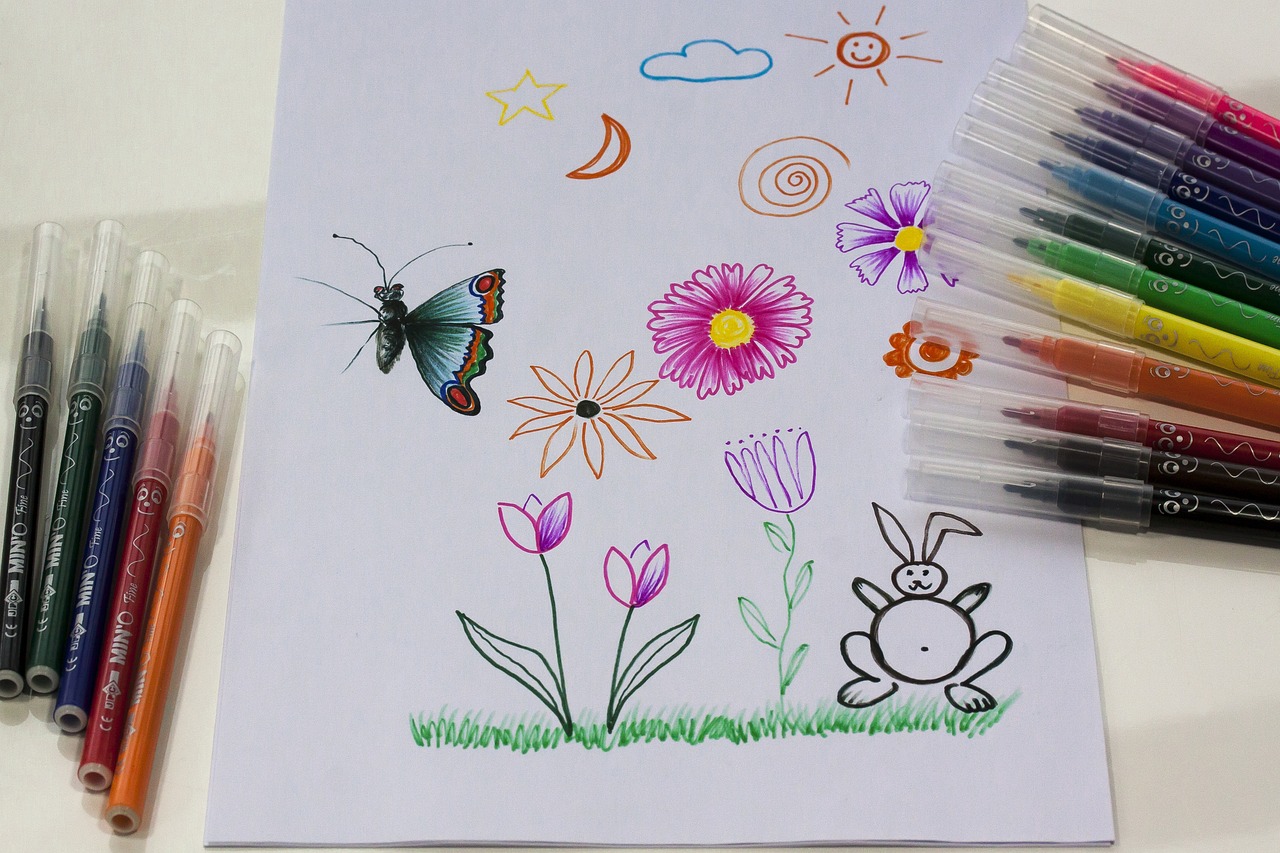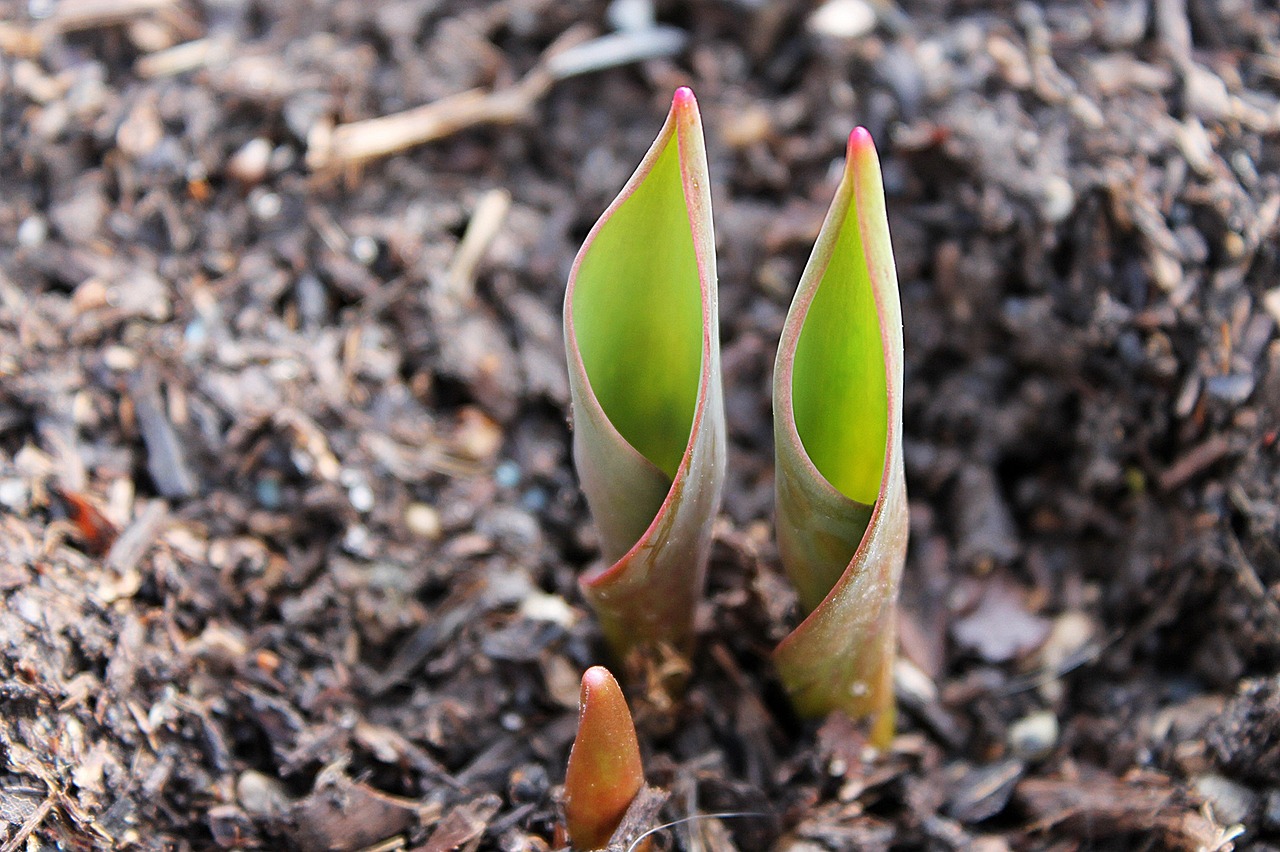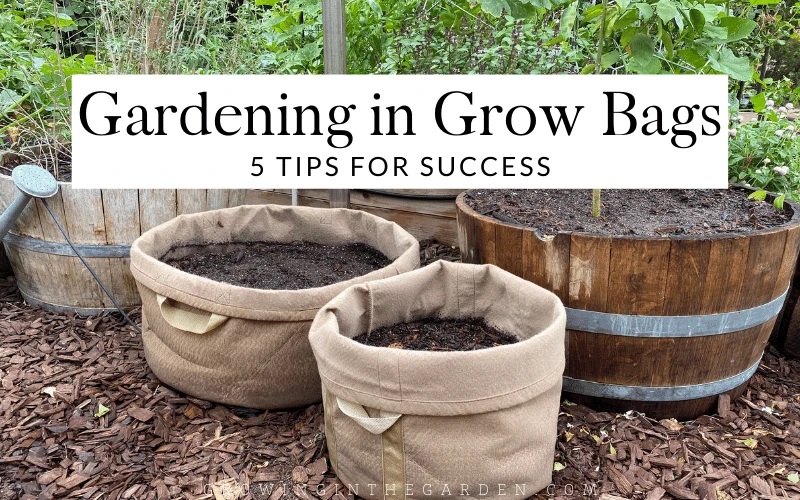Table of Contents
A garden adorned with vibrant, healthy flowers is a sight to behold. Whether you’re an experienced gardener or just starting on your gardening journey, there’s always room to enhance your floral displays. With the right care, attention and a little green-thumb magic, you can transform your garden into a colorful oasis. In this article, we’ll share some invaluable gardening tips that will help you grow vibrant and healthy flowers that will bring joy to your outdoor space.
A garden adorned with vibrant, healthy flowers is a sight to behold. Whether you’re an experienced gardener or just starting on your gardening journey, there’s always room to enhance your floral displays. With the right care, attention and a little green-thumb magic, you can transform your garden into a colorful oasis. In this article, we’ll share some invaluable gardening tips that will help you grow vibrant and healthy flowers that will bring joy to your outdoor space.
Soil Enrichment: The foundation of a thriving garden lies beneath the surface. Invest in good-quality soil and enrich it with compost or organic matter. Healthy soil provides essential nutrients to your plants, promoting strong root development and overall vitality.
Appropriate Plant Selection: Choose flowers that are well-suited to your climate and soil conditions. Consider factors such as sunlight, temperature and moisture levels when selecting plants. Native species often thrive with less effort, as they are adapted to local conditions.
Proper Watering: Overwatering or underwatering can be detrimental to your plants. Learn the specific water needs of each type of flower in your garden and establish a regular watering schedule. Consider using a drip irrigation system for efficiency.
Mulching: Mulch not only conserves moisture but also helps regulate soil temperature and prevents weeds. Apply a layer of mulch around your flowers to keep the soil healthy and reduce the need for excessive weeding.
Pruning and Deadheading: Regularly prune your flowers to encourage bushier growth and remove dead or spent blooms. This process, known as deadheading, redirects energy toward new growth and prolongs the blooming period.
Pest and Disease Management: Keep an eye out for common garden pests and diseases. Early detection and intervention can prevent infestations from spreading. Consider using organic pest control methods to protect your plants.
Fertilization: Flowers need proper nutrition. Use a balanced fertilizer or one specifically formulated for flowering plants to ensure your blooms are well-fed throughout the growing season. Follow recommended application rates to avoid over-fertilizing.
Companion Planting: Utilize the concept of companion planting to encourage beneficial interactions between plants. Some flowers and herbs can deter pests, enhance soil quality or provide support to neighboring plants.
Regular Monitoring: Make it a habit to inspect your garden regularly. Observe your plants for signs of stress, disease or nutrient deficiencies. Timely intervention can prevent problems from escalating.
Patience and Experimentation: Gardening is a learning process. Be patient with yourself and your plants. Experiment with different varieties and techniques to discover what works best for your specific garden.
Remember, a garden is a dynamic living space that evolves over time. By implementing these tips and nurturing your garden with care, you’ll not only enjoy the beauty of vibrant blooms but also cultivate a deeper connection with the natural world and the joy of gardening itself. Happy gardening!
If you’d like to dive deeper into this subject, there’s more to discover on this page: Gardening with Epsom Salt For Plants | SaltWorks®
Select the Right Location
The first step to successful flower gardening is choosing the right location. Most flowering plants thrive in areas with plenty of sunlight, so select a spot that receives at least 6-8 hours of direct sunlight daily. However, some varieties, like impatiens and begonias, prefer partial shade. Understanding your flower’s sunlight requirements is key to their vitality.
The Art of Flower Gardening: Nurturing Blooms from the Ground Up
Creating a flourishing flower garden is akin to composing a symphony of colors and fragrances, but it all begins with the foundational notes—the right location. This crucial first step sets the stage for the entire performance. When it comes to flower gardening, the key is understanding the light requirements of your botanical performers and selecting the perfect spot to showcase their vitality.
Sunlight as the Conductor: Sunlight is the conductor of the garden orchestra, orchestrating the growth and bloom of your floral ensemble. Most flowering plants are sun worshippers and thrive in areas that bask in the sun’s warm embrace for at least 6-8 hours daily. These sun-loving stars, such as roses and marigolds, burst into vibrant displays under the full sun’s spotlight.
Partial Shade Variations: However, not all flowers are divas craving the spotlight. Some, like impatiens and begonias, prefer a more subdued role and thrive in partial shade. These varieties thrive when they enjoy a break from the intense midday sun, with dappled light filtering through trees or the gentle morning and afternoon rays.
Understanding Your Floral Ensemble: To harmonize your flower garden, it’s crucial to understand the unique sunlight preferences of each bloom in your ensemble. Some may be soloists that demand center stage in full sun, while others shine brightest in the wings of partial shade. Take the time to research and get to know your flowers intimately, as if they were the notes on a musical score.
Location, Location, Location: Armed with this knowledge, choose the location of your flower garden wisely. Observe the patterns of sunlight throughout the day and assess the potential spots in your garden. Does a particular area receive ample morning sun but shade in the afternoon? Is there a place that enjoys the gentle warmth of the evening sun? Each location offers a different ambiance for your botanical symphony.
Creating Harmony: In the art of flower gardening, harmony is achieved when each bloom is placed in its ideal setting. Plant sun-loving flowers in sun-drenched areas, allowing them to reach their full potential. In partial shade spots, arrange the more delicate blooms that flourish in the softer, filtered light. By crafting this harmonious environment, you ensure that every member of your floral ensemble thrives and contributes to the garden’s visual and aromatic masterpiece.
The Ongoing Performance: Keep in mind that the garden is an ever-evolving performance. As the seasons change and trees grow or shed their leaves, the sunlight patterns may shift. Adaptation is key. By monitoring your garden’s sunlight dynamics and adjusting the placement of your blooms accordingly, you can continue to nurture a vibrant and thriving floral masterpiece year after year.
So, let the sunlight be your garden’s conductor, guiding your flowers to their crescendo of color and fragrance. With careful consideration of their unique needs and the perfect stage, you’ll cultivate a harmonious garden where every bloom is a star and the garden itself is a living symphony of beauty and vitality.
If you’d like to dive deeper into this subject, there’s more to discover on this page: The Cannabis Gardener: A Beginner’s Guide to Growing Vibrant …

Prepare the Soil
Healthy soil is the foundation of a flourishing garden. Conduct a soil test to determine its pH and nutrient levels. Most flowers prefer slightly acidic soil (pH 6-7) rich in organic matter. You can amend the soil with compost or well-rotted manure to improve its texture and nutrient content. Properly prepared soil provides the essential nutrients and drainage necessary for strong root development.
Cultivating Healthy Soil: The Cornerstone of a Thriving Garden
In the world of gardening, the significance of healthy soil cannot be overstated—it is the very foundation upon which your garden’s success is built. Whether you’re growing vibrant flowers or hearty vegetables, the quality of your soil plays a pivotal role in nurturing robust and thriving plants. Let’s embark on a journey into the world of soil preparation and enrichment, exploring how you can create the ideal growing environment for your garden.
1. The Importance of Soil Testing:
Understanding your soil is the first step in creating a flourishing garden. Conducting a soil test provides valuable insights into its pH level and nutrient content. Most flowers thrive in soil with a slightly acidic pH ranging from 6 to 7. By knowing your soil’s current condition, you can make informed decisions about how to improve it.
2. pH Balance and Nutrient Levels:
A soil’s pH level affects the availability of essential nutrients to plants. If your soil is too acidic or too alkaline, it can hinder nutrient uptake, leading to stunted growth and poor flowering. The optimal pH range for most flowers allows them to access vital nutrients, ensuring healthy development.
3. Enriching Your Soil:
To create the ideal growing environment for your flowers, you can amend your soil to enhance its texture and nutrient content. Incorporating organic matter such as compost or well-rotted manure is a tried-and-true method. These organic materials not only improve soil structure but also introduce essential nutrients that foster strong root development.
4. Texture and Drainage:
Apart from nutrient content, soil texture is another critical factor. A well-balanced soil should offer a mixture of sand, silt and clay, commonly referred to as loam. This balanced texture allows for proper drainage while retaining essential moisture. Amending your soil with organic matter enhances its texture, ensuring that water is neither retained excessively nor drained too quickly.
5. Nutrient Accessibility:
Adequate nutrient availability is essential for healthy flower growth. Well-prepared soil provides a reservoir of essential nutrients that plants can readily access. This ensures that your flowers receive the nourishment they need to produce vibrant blooms.
6. Strong Root Development:
Healthy soil sets the stage for strong root development, which is crucial for the overall health and vitality of your flowers. A robust root system anchors plants securely in the ground and enables efficient nutrient uptake. This, in turn, supports vigorous growth and abundant flowering.
7. Seasonal Maintenance:
Soil care is an ongoing process. As your garden evolves throughout the seasons, consider periodic soil testing to monitor its pH and nutrient levels. Adjustments can be made as needed to ensure your soil remains in optimal condition.
In conclusion, the journey to a thriving garden begins with the soil beneath your feet. By conducting soil tests, understanding pH balance and nutrient levels and enriching your soil with organic matter, you lay the groundwork for a bountiful harvest of vibrant flowers. Healthy soil not only nourishes your plants but also fosters strong root development, enabling them to flourish and grace your garden with an abundance of blossoms. So, embrace the art of soil preparation, for it is the cornerstone of a flourishing garden that will reward you with beauty and vitality throughout the seasons.
Looking for more insights? You’ll find them right here in our extended coverage: Gardening with Epsom Salt For Plants | SaltWorks®

Choose the Right Flowers
Selecting the right flowers for your garden is crucial. Consider the climate in your region, as certain flowers thrive in specific conditions. Native plants often adapt well to local climates and require less maintenance. Also, choose a variety of flowers that will provide continuous blooms throughout the growing season, ensuring your garden remains vibrant and colorful.
Choosing the Perfect Flowers for Your Garden: A Blossoming Guide
The selection of flowers for your garden is akin to curating a living masterpiece. It’s a decision that will not only determine the garden’s visual appeal but also its overall health and resilience. As you embark on this horticultural journey, consider these key factors to ensure your garden thrives and remains a vibrant haven of color and life.
Climate Consciousness: Your region’s climate is the foundation upon which your garden’s success rests. Different flowers have varying temperature, humidity and water requirements. Research the climate zone in which you reside to identify flowers that are well-suited to the local conditions. Native plants, in particular, often adapt seamlessly to the climate, requiring less intervention and fostering biodiversity.
Native Plants and Ecosystem Harmony: Native plants have evolved to thrive in their specific ecosystems, making them excellent choices for gardeners interested in low-maintenance and eco-friendly gardening. They provide essential habitat and food for local wildlife, contributing to a balanced and healthy ecosystem.
Blossom Diversity: A garden that blooms consistently throughout the growing season is a garden of enduring beauty. Choose a variety of flowers with staggered bloom times. Early spring bulbs like crocuses and daffodils give way to summer perennials like roses and lilies, which in turn lead to the vibrant colors of autumn asters and chrysanthemums. This diversity ensures your garden is alive with color from early spring to late fall.
Color Palette and Harmony: Plan your garden’s color palette thoughtfully. Consider complementary and contrasting colors to create eye-catching combinations. Harmonious color schemes can evoke different moods. Warm colors like red and orange bring energy, while cool colors like blue and purple create a calming atmosphere.
Growth Habit and Structure: Flowers come in various growth habits, including perennials, annuals, shrubs and vines. Mixing these elements adds depth and structure to your garden. Tall flowers like sunflowers and delphiniums provide vertical interest, while ground covers like creeping thyme create lush carpets.
Soil and Sun Preferences: Different flowers have varying soil and sun preferences. Some thrive in full sun, while others prefer partial or full shade. Be sure to match your flower choices with the garden’s sunlight conditions and soil type. Amending the soil and providing proper sunlight ensures the health and vitality of your blooms.
Wildlife Attraction: Consider the role of your garden in supporting local wildlife. Flowers that attract pollinators like bees and butterflies, such as coneflowers and butterfly bush, contribute to the ecological balance and enhance the garden’s visual appeal.
Maintenance Level: Assess your available time and willingness to maintain your garden. Some flowers, like roses, may require more care, while native wildflowers can thrive with minimal intervention. Choose flowers that align with your maintenance preferences and schedule.
Aesthetic and Functional Choices: Your garden can serve both aesthetic and functional purposes. Think about your goals – whether you want a garden purely for visual delight or one that also provides herbs, cut flowers or vegetables for your table. Combining beauty and functionality is entirely achievable.
Personal Preferences: Ultimately, your garden is an expression of your personal style and preferences. Choose flowers that resonate with you and bring you joy. A garden that reflects your personality will be the most rewarding.
In conclusion, selecting the right flowers for your garden is an art that involves a blend of science, creativity and personal connection. By considering factors like climate, native plants, diversity of blooms, color harmony and wildlife support, you’ll craft a garden that not only thrives but also becomes a harmonious sanctuary of natural beauty. So, with your trowel in hand and your heart full of inspiration, embark on the delightful journey of garden selection and let your unique garden vision bloom.
To delve further into this matter, we encourage you to check out the additional resources provided here: 30 Summer Flowers to Enjoy in Your Outdoor Garden All Season Long

Proper Watering
Consistent and appropriate watering is essential for flower health. Most flowers prefer deep, infrequent watering rather than shallow, frequent sessions. Water in the morning to allow excess moisture to evaporate during the day, reducing the risk of fungal diseases. Be mindful not to overwater, as this can lead to root rot.
Consistent and appropriate watering is a cornerstone of maintaining the health and vitality of your flowers. Understanding the specific watering needs of your floral garden can make a significant difference in the success of your cultivation efforts. Here, we delve further into the art and science of flower watering.
Flowers, like all living organisms, have their preferences when it comes to hydration. While it might seem counterintuitive, most flowers actually prefer deep, infrequent watering over shallow, frequent sessions. This approach encourages the development of a robust root system. Deep watering allows the roots to reach down into the soil, where they can access nutrients and moisture more effectively. As a result, your flowers are better equipped to withstand periods of drought, as their roots can tap into deeper water reserves.
The timing of your watering routine also plays a crucial role in flower health. Watering in the morning is generally recommended for several reasons. First, morning watering allows excess moisture to evaporate during the day, reducing the risk of fungal diseases that thrive in damp conditions. Second, it provides your flowers with the hydration they need to thrive during the sunniest and most active part of the day. Finally, morning watering is a gentle wake-up call for your blooms, ensuring they start the day refreshed and ready to face the challenges of the environment.
While proper watering is essential, overwatering is a common pitfall for many gardeners. Overly saturated soil can lead to a condition known as root rot, which can be detrimental to plant health. Signs of overwatering include wilting, yellowing leaves and a general decline in the vibrancy of your flowers. To avoid overwatering, it’s crucial to understand your specific flower species’ moisture requirements and the soil’s drainage capabilities. Invest in a moisture meter or simply use your finger to check the soil’s moisture level before each watering to ensure you’re providing the right amount of hydration.
In addition to the frequency and timing of watering, consider the method you use to deliver water to your flowers. Drip irrigation or soaker hoses are efficient choices, as they target the root zone directly and minimize water waste through evaporation or runoff. Mulching around your flowers also helps retain moisture, reducing the need for frequent watering.
Lastly, pay attention to external factors that can affect your flowers’ water needs, such as weather conditions and the growth stage of the plants. During hot, dry spells, your flowers may require more frequent watering, while cooler, rainy periods may necessitate adjustments to your watering schedule.
In conclusion, mastering the art of flower watering involves a combination of understanding your flower species’ unique needs, proper timing and appropriate watering techniques. When you provide your blooms with the right amount of moisture in the right way, you not only ensure their health and longevity but also cultivate a flourishing garden that delights the senses and enhances the beauty of your outdoor space.
Should you desire more in-depth information, it’s available for your perusal on this page: Gardening with Epsom Salt For Plants | SaltWorks®

Mulching
Mulching offers numerous benefits, such as conserving soil moisture, regulating soil temperature and preventing weed growth. Apply a layer of organic mulch around your flowers to maintain moisture and protect their roots. Mulch also enhances the visual appeal of your garden.
Certainly! Here’s an extended idea that explores the benefits of mulching in more detail and provides additional tips for gardeners:
Mulching: A Garden’s Best Friend
Mulching is a fundamental practice in gardening that offers numerous benefits, transforming your garden into a thriving, low-maintenance oasis. Beyond its aesthetic appeal, mulch plays a pivotal role in supporting plant health and ecosystem balance. Here are some key advantages and tips for successful mulching:
1. Soil Moisture Conservation: One of the primary benefits of mulching is its ability to conserve soil moisture. As the mulch layer acts as a protective barrier, it reduces water evaporation from the soil surface. This means your plants receive a more consistent and adequate water supply, even during dry spells. This moisture retention is especially crucial for flower beds, where consistent hydration leads to vibrant, long-lasting blooms.
2. Soil Temperature Regulation: Mulch acts as a natural insulator for the soil. During scorching summers, it helps to keep the soil cooler, preventing stress to plant roots. Conversely, in colder months, it offers insulation against frost, safeguarding sensitive flower varieties. By maintaining stable soil temperatures, mulching ensures your garden remains a hospitable environment year-round.
3. Weed Suppression: Weeding can be a gardener’s nightmare. Mulch serves as a formidable weed deterrent by blocking sunlight from reaching weed seeds, inhibiting their germination and growth. This reduces the time and effort needed for weeding, allowing you to focus on the enjoyment of your garden rather than constant maintenance.
4. Organic Mulch Choices: When selecting mulch for your flower garden, consider using organic options like wood chips, shredded bark, compost or leaf mulch. Organic mulches break down over time, enriching the soil with valuable nutrients and enhancing its structure. This natural decomposition process not only benefits your flowers but also fosters a healthier, more fertile garden ecosystem.
5. Proper Mulch Depth: Apply mulch at an appropriate depth, typically around 2-4 inches. Avoid piling mulch too close to the plant stems, as this can create a moist environment conducive to rot and pests. Leave a small gap around the base of each plant to allow for airflow.
6. Mulch Aesthetics: Beyond its practical benefits, mulch enhances the visual appeal of your garden. Choose mulch that complements your garden’s aesthetic, whether it’s a rustic woodland look with wood chips or a tidy, formal garden with dark-colored mulch. The uniform layer of mulch also creates a polished, tidy appearance that can make your flowers stand out even more.
7. Seasonal Mulch Refresh: Mulch naturally decomposes over time, so it’s essential to refresh your mulch layer annually or as needed. This ensures your garden continues to enjoy the full range of mulch benefits, from moisture retention to weed control.
Incorporating mulch into your gardening routine not only simplifies maintenance but also fosters a healthier, more productive garden. Its multifaceted advantages, ranging from moisture conservation to weed suppression and temperature regulation, make it an indispensable tool for any gardener looking to create a thriving and visually stunning outdoor space. So, go ahead, mulch your flower beds and watch your garden flourish.
For additional details, consider exploring the related content available here Winter Prep: How to Mulch Your Azaleas | Encore Azalea

Pruning and Deadheading
Regular pruning and deadheading (removing spent flowers) promote healthy growth and continuous blooming. Pruning encourages bushier, more robust plants and prevents overcrowding. Deadheading redirects energy from seed production to new flower formation, ensuring a longer blooming period.
The art of gardening is a harmonious partnership between nature and the nurturing hand of the gardener. Regular pruning and deadheading, often considered the gentle touch of this partnership, play vital roles in cultivating healthy and prolific blooms. Let’s delve deeper into these horticultural practices and discover the secrets they hold for vibrant and continuous flower displays.
Pruning is akin to sculpting a masterpiece. By selectively trimming branches, leaves and stems, gardeners guide the growth of their plants with precision. Pruning serves several essential purposes. Firstly, it encourages the development of bushier, more robust plants. As you trim back excess growth, the plant redirects its energy to the remaining branches, resulting in fuller and healthier foliage.
Pruning is also a safeguard against overcrowding. In a lush garden, plants often vie for space and light. By carefully removing excess growth, you create breathing room for each plant, allowing them to thrive without competition. This not only enhances the aesthetics of your garden but also prevents diseases by improving air circulation.
Deadheading, on the other hand, is a practice of renewal. By diligently removing spent flowers—those that have gracefully fulfilled their purpose—you prompt the plant to channel its energy into new flower production. This act redirects the plant’s resources from seed production, which follows pollination, to the creation of new blooms. The result? A prolonged period of flowering, where the garden continues to dazzle with color and fragrance.
The benefits of deadheading extend beyond aesthetics. It also prevents self-seeding, which can sometimes lead to overcrowding and an imbalance in the garden’s composition. Moreover, it encourages plants to stay in their prime condition, producing top-quality blooms throughout the season.
While the practices of pruning and deadheading may seem like simple acts of garden maintenance, they are profound in their impact. They reflect the gardener’s keen understanding of a plant’s life cycle, needs and potential. These practices epitomize the delicate balance between nurturing and allowing nature to flourish.
In essence, regular pruning and deadheading represent the gardener’s commitment to coaxing the best from their plants, nurturing their health and enhancing the garden’s splendor. It’s a dance with nature, where the gardener’s touch guides the rhythm of growth and renewal. As you embark on this journey in your garden, you’ll find that it’s not just about tending to plants; it’s about nurturing a living work of art that evolves, thrives and continuously enchants with its vibrant and enduring beauty.
Additionally, you can find further information on this topic by visiting this page: 10 Ways to Care for Your Garden: How to Keep Plants Alive – 2023 …

Fertilize Wisely
Feeding your flowers with the right nutrients is essential. Use a balanced, slow-release fertilizer to provide a steady supply of essential elements. Over-fertilization can lead to excessive foliage growth at the expense of flowers, so follow recommended guidelines.
Nurturing your flowers with the proper nutrients is akin to providing them with a gourmet meal tailored to their specific needs. It’s a crucial aspect of gardening that can make the difference between lackluster blooms and a vibrant, flourishing garden. Here’s an extended idea to delve deeper into the art of flower feeding:
Feeding Your Flowers for Blooming Brilliance:
1. Choosing the Right Fertilizer:
- Understanding N-P-K: When selecting a fertilizer, pay attention to the N-P-K ratio on the packaging. N-P-K stands for Nitrogen (N), Phosphorus (P) and Potassium (K), which are the primary macronutrients plants need. Nitrogen promotes leafy growth, phosphorus supports flower development and root health and potassium enhances overall plant vigor. For flowering plants, look for a balanced fertilizer with equal or slightly higher phosphorus (P) content. For example, a 10-10-10 or 10-20-10 fertilizer can work well.
- Slow-Release Formulas: Opt for slow-release fertilizers. These gradually release nutrients over time, providing a consistent supply to your plants. This helps avoid the pitfalls of over-fertilization and prevents nutrient imbalances that can harm your flowers.
2. Timing Matters:
- Early Spring Awakening: As your flowers emerge from their winter slumber, it’s a good time to kick-start their growth with a gentle feeding. Apply a slow-release fertilizer when you notice new growth or as recommended on the product label.
- Mid-Season Boost: Around mid-summer, consider giving your flowering plants another dose of fertilizer. This helps sustain their energy levels for continued blooming.
- Late-Season Farewell: As fall approaches, it’s essential to taper off fertilization. You want your plants to gradually wind down for winter dormancy rather than promoting new growth that might not have time to harden off before cold weather sets in.
3. Application Techniques:
- Even Distribution: Spread the fertilizer evenly around the base of the plant, extending slightly beyond the drip line (the area where rainwater falls from the outermost leaves). Avoid direct contact with plant stems to prevent potential burning.
- Watering Afterward: Water the area thoroughly after applying fertilizer. This helps nutrients seep into the soil and reach the plant’s roots.
4. Monitoring and Adjusting:
- Visual Assessment: Regularly inspect your flowering plants throughout the growing season. Look for signs of nutrient deficiencies, such as yellowing leaves or poor flowering. Adjust your feeding regimen accordingly, but do so with caution to avoid overdoing it.
- Soil Testing: For precise nutrient management, consider conducting a soil test. Soil tests can provide detailed insights into your soil’s nutrient composition and pH levels. Based on the results, you can fine-tune your fertilizer choices and application rates.
Remember that more isn’t always better when it comes to feeding your flowers. Over-fertilization can indeed lead to excessive foliage growth at the expense of flowers, which is counterproductive to your gardening goals. By choosing the right fertilizer, timing your applications thoughtfully and monitoring your plants closely, you can ensure that your flowering garden thrives with the balanced, nourishing diet it needs to produce a symphony of vibrant and beautiful blooms throughout the growing season.
Should you desire more in-depth information, it’s available for your perusal on this page: How to Get Non-Stop Color in the Garden With Annuals – Stacy Ling

Pest and Disease Management
Monitor your garden for signs of pests and diseases. Early detection and intervention are key to preventing damage. Consider using natural remedies or organic pesticides to minimize harm to beneficial insects and the environment.
Monitoring your garden for signs of pests and diseases is an essential practice for any gardener, whether you’re cultivating a small backyard garden or managing a larger agricultural plot. Early detection and intervention can make a significant difference in preventing extensive damage to your plants. Here are some important considerations and strategies to help you maintain a healthy garden:
Vigilance is Key: Regularly inspect your plants for any unusual signs. Look for discolored or wilting leaves, holes in foliage, distorted growth or the presence of insects. Early detection allows you to identify and address issues before they escalate.
Beneficial Insects: Not all insects in your garden are pests. Some are beneficial and help control pest populations naturally. Ladybugs, lacewings and parasitic wasps, for example, are predators that feed on garden pests. Encourage these helpful insects by planting nectar-rich flowers and avoiding the use of broad-spectrum pesticides that harm both pests and beneficials.
Natural Remedies: Consider using natural remedies to combat garden pests. Neem oil, diatomaceous earth and insecticidal soap are examples of organic and low-impact solutions. These treatments target specific pests while minimizing harm to other organisms and the environment.
Crop Rotation: If you notice recurring pest or disease problems in your garden, consider practicing crop rotation. This involves changing the location of crops within your garden each season. Crop rotation disrupts the life cycles of pests and pathogens, reducing their buildup in the soil.
Companion Planting: Some plants have natural properties that repel or deter pests. Companion planting involves strategically placing these plants alongside susceptible crops. For instance, planting marigolds among your vegetables can help deter aphids and nematodes.
Healthy Soil: Healthy soil is the foundation of a thriving garden. Nutrient-rich soil that is well-balanced and teeming with beneficial microorganisms helps plants resist diseases and recover from pest damage more effectively. Regularly amend your soil with organic matter to maintain its health.
Integrated Pest Management (IPM): IPM is a holistic approach to pest control that combines various strategies, including cultural, biological and chemical methods. It emphasizes the least harmful means of pest management and aims to reduce the reliance on synthetic pesticides.
Stay Informed: Keep yourself informed about common pests and diseases in your region. Local agricultural extension services, gardening forums and gardening books specific to your area can be valuable sources of information. Understanding the challenges your region faces can help you proactively address them.
By adopting these practices and staying attentive to the health of your garden, you can minimize the impact of pests and diseases while promoting a thriving and sustainable garden environment. Remember that a balanced approach that considers both the health of your plants and the well-being of the broader ecosystem is key to successful gardening.
For a comprehensive look at this subject, we invite you to read more on this dedicated page: A Virginian’s Year-Round Guide to Yard Care: Tips and Techniques …

Growing vibrant and healthy flowers is a rewarding pursuit that allows you to connect with nature and beautify your surroundings. By following these gardening tips, you can create a flourishing garden filled with a riot of colors and fragrances. Remember that gardening is a journey of learning and patience, so enjoy the process as you watch your garden bloom into a masterpiece of natural beauty. With care, dedication and a touch of creativity, your garden can become a haven of vibrant and healthy flowers for years to come.
Indeed, the act of growing vibrant and healthy flowers transcends mere gardening; it’s a deeply enriching experience that nourishes not only the soil but also the soul. Let’s delve further into this concept and explore the profound rewards and lessons that come with cultivating a flourishing flower garden.
A Connection with Nature
Gardening, especially tending to flowers, is a gateway to a profound connection with the natural world. As you kneel among the petals and leaves, you become attuned to the subtle rhythms of the earth. You’ll notice the way the morning dew glistens on the petals, the gentle sway of the blooms in the breeze and the mesmerizing dance of pollinators that visit your garden. This connection with nature provides solace in a fast-paced world and reminds us of our intrinsic bond with the environment.
Creating Beauty All Around
One of the most gratifying aspects of flower gardening is the transformation of your immediate surroundings. The riot of colors and fragrances that blossom in your garden is not just a visual delight but also an aromatic symphony that envelops your senses. You’re not just cultivating flowers; you’re crafting a living work of art that greets you every day with its beauty and grace.
Learning and Patience
Gardening is a lifelong journey of learning and patience. It teaches us to be observant, patient and adaptable. You learn to anticipate the changing seasons, adjust your care routines and troubleshoot when challenges arise. In the process, you acquire a wealth of knowledge about plants, soils and the ecosystem. Moreover, you develop resilience and perseverance as you navigate the inevitable setbacks and failures.
The Joy of Growth and Transformation
Witnessing your garden’s growth and transformation over time is akin to watching a masterpiece come to life. From the first tender shoots to the full, lush blooms, each stage carries a unique charm. It’s a tangible reminder that life is a continuous cycle of growth, change and renewal. The blossoming of your garden mirrors your own personal growth and journey through life.
Cultivating Peace and Mindfulness
Gardening is a meditative practice that invites mindfulness and inner peace. As you immerse yourself in the tasks of weeding, pruning and nurturing, you find solace in the present moment. The worries of the day fade away and you become one with the earth beneath your hands. This sense of calm and mindfulness can be therapeutic, reducing stress and promoting mental well-being.
A Legacy of Beauty
Perhaps one of the most enduring rewards of flower gardening is the legacy of beauty you leave behind. A well-tended garden can be enjoyed by generations to come and it carries with it the stories of your care and dedication. It becomes a living testament to your love for nature and your commitment to preserving and enhancing its splendor.
In conclusion, growing vibrant and healthy flowers is a journey that nourishes the soul, deepens our connection with nature and enriches our lives in countless ways. It’s a reminder that beauty can be cultivated, patience is a virtue and the simple act of nurturing life can bring immeasurable joy and fulfillment. So, as you embark on your gardening adventure, savor every moment and let your garden be a reflection of your love for the natural world and the beauty it holds.
For additional details, consider exploring the related content available here Deadheading Flowers – Benefits, Tips & Tricks + Things to Avoid
More links
Explore this link for a more extensive examination of the topic: Best Flowers for a Sunny Garden – Cranbury Fields
